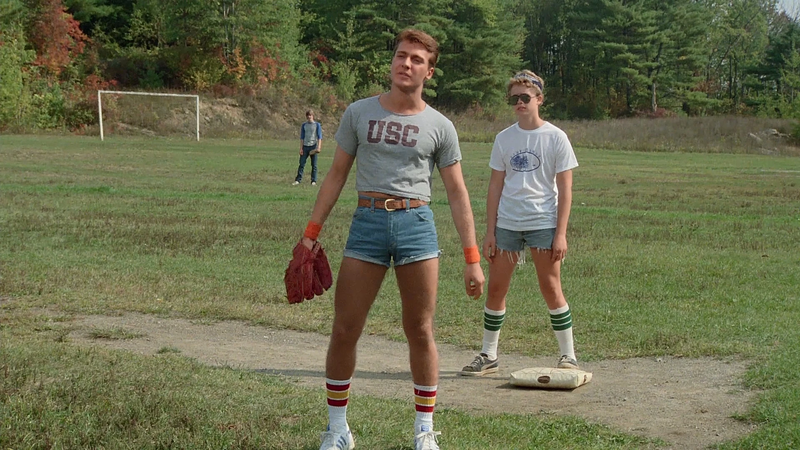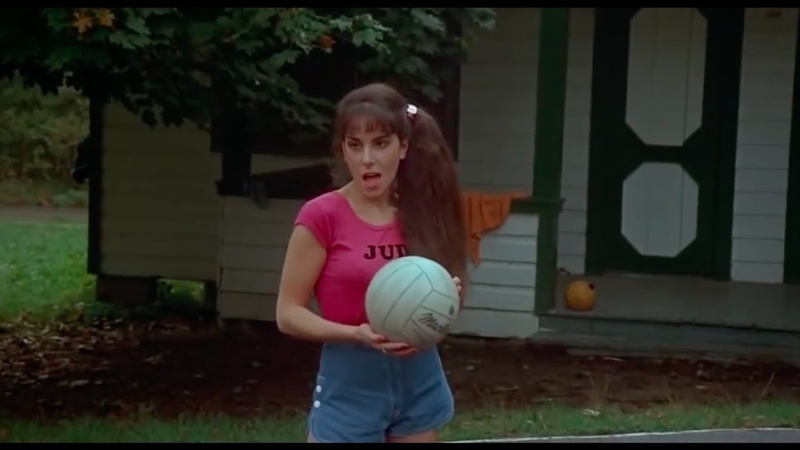Sleepaway Camp turns forty years old this month. That feels weird to say, doesn't it? The summer classic made during the slasher boom of the 1980s is a staple of sleepovers, late-night watches, countless repertory screenings, and conventions. And it has now officially been around for four full decades. Perhaps most known for its wild ending reveal, which in recent times has been seen as problematic or empowering depending on which way your pendulum swings, Sleepaway Camp is far more than just a shocker of a finale. It's one of the most original slasher films of all time.
Sleepaway Camp was shot over five weeks in 1982 with a humble budget of around $350,000. With Friday the 13th enjoying massive success and undergoing the sequel treatment, many threw their hat into the slasher ring hoping to make it big. On paper, the only ingredients needed for a successful slasher in this era were: a maniac with a weapon, a secluded setting, and a cast of "characters" that could double as corpses. Still, $350,000 is a small budget for any film. I'm convinced that the wild tonal swings and execution are the result of this. Sleepaway Camp stands out from its colleagues in how it balances that tone, for better or worse. One second, audiences are subjected to a horrific murder scene, and the next scene shows summer camp antics such as a game of softball or Capture the Flag.

The focus on adolescent campers is another element that helps Sleepaway Camp stand out from the overcrowded genre. Kids and teens make up most of the victim pool rather than horny young adults meant to be in charge. Sure, Friday the 13th Part VI: Jason Lives featured a summer camp occupied by actual campers, but that film's violence and carnage are kept separate from the underage characters. Such is not the case in Sleepaway Camp, a film that doesn't discriminate and instead puts everyone on the chopping block. No one is safe, and instead all are treated to increasingly gruesome deaths.
These adolescents aren't just throwaway characters, they're fleshed out with memorable personalities. First off, there's Angela (Felissa Rose), the survivor of a horrific childhood accident who becomes the target of relentless bullying. There's Ricky (Jonathan Tiersten), Angela's cousin, who's a hot-headed hot shot with a heart of gold, willing to protect his cousin at all costs. We have Paul (Christopher Collet), Ricky's best friend and Angela's love interest, who actually tries to get to know her.

Even the bullies are memorable, especially Judy (Karen Fields), who delivers an iconic mean-girl performance. Superb writing and performances make these characters endearing after all these years, with iconic moments like Ricky's "Eat shit and live, Bill" and Judy's body-shaming burn, "Flat as a board and needs a screw!" These lines remain quoted to this very day.

The kills and gore hold up after four decades, providing audiences with some of the most unique slasher deaths put to screen. It's easy to create a slasher film where the killer solely uses blades, but Sleepaway Camp wasn't afraid to get creative with the kills to the point that hardly anyone actually gets "slashed." Kills range from boiling a pedophile alive (with a comically large pot that the commentary mentions was specially made for the film), to disposing of a bully with a beehive while he drops a number two in the bathroom. The effects in these kill scenes are absolutely wince-inducing. The boiling water death features visible boils forming on the victim in real-time, an impressive effect given the film's budget. Sleepaway Camp delivers on the violence in a way that keeps you hooked to see what wild way the next victim will be disposed of.
The most controversial aspect of Sleepaway Camp is Angela Baker. The ending reveals Angela was born Peter Baker, who was presumed dead. The "twist" is played for shock value. Though that was obviously the original intent, Angela becomes the inverse of the "final girl" trope physically and thematically. Angela is one of the sole survivors of the carnage because she's the killer. All of the victims in Sleepaway Camp are people who either wronged or took advantage of her. When held in that light, there are no innocent victims. Combined with the reveal, it can be read as an allegory for the microaggressions queer people deal with in day-to-day life. Obviously, nobody was thinking about those themes when the film was made. But things change, and as we grow as a society and revisit the film with different perspectives and views, it turns out the slasher film from 1983 that was meant to be a mindless shocker, can take on a whole new meaning when viewed through a modern lens.

Take, for example, the modern context in which the reveal of Angela's gender identity is viewed. Many argue that Angela isn't actually transgender but was instead groomed to live in the identity chosen by her aunt. It's a complex topic and remains the subject of debate today. Still, there's also been a reclamation of sorts in the queer subset of horror fandom, quite possibly due to the sequels that embrace Angela's identity as a trans woman.
From my perspective as a trans woman myself, I see Angela's identity as female. For years, when I questioned my gender identity and attempted to force myself to live as someone I wasn't, I was absolutely miserable. I couldn't function and found myself battling severe depression and anxiety issues. The way I view Angela is that we see her in real-time overcome her internal dysphoria and become more comfortable in her own skin. Near the start of Sleepaway Camp, she's quiet and reserved. Often choosing not to participate in the summer camp's activities in favor of sitting alone. Soon, she becomes more comfortable, engages in a romance with Paul, and even starts talking and participating in games like Capture the Flag. The modern (often personal) context of these scenes plays into the inversion of intentions present in Sleepaway Camp.

Sleepaway Camp, 40 years later, remains one of the most contextually rich slashers. On the surface, it's a fun-as-hell gonzo slasher film made in an era where films in the genre were a dime a dozen and made for as little as possible. A film made solely for profit. However, as times change and people evolve, what was once considered a "shock" is now somewhat reclaimed by the very people it unwillingly villainizes. It's a slasher film that spawned a legacy of sequels that embraced Angela's gender identity and remains ever-present in horror conversations with endless debate and thought-provoking takes on the material. Even if it didn't have that element, it would still be a great slasher in its own right, but looking at Sleepaway Camp through multiple lenses elevates it to legendary status, shining on in the endless summer.
Read more Problematic Films: In Defense Of Sleepaway Camp






